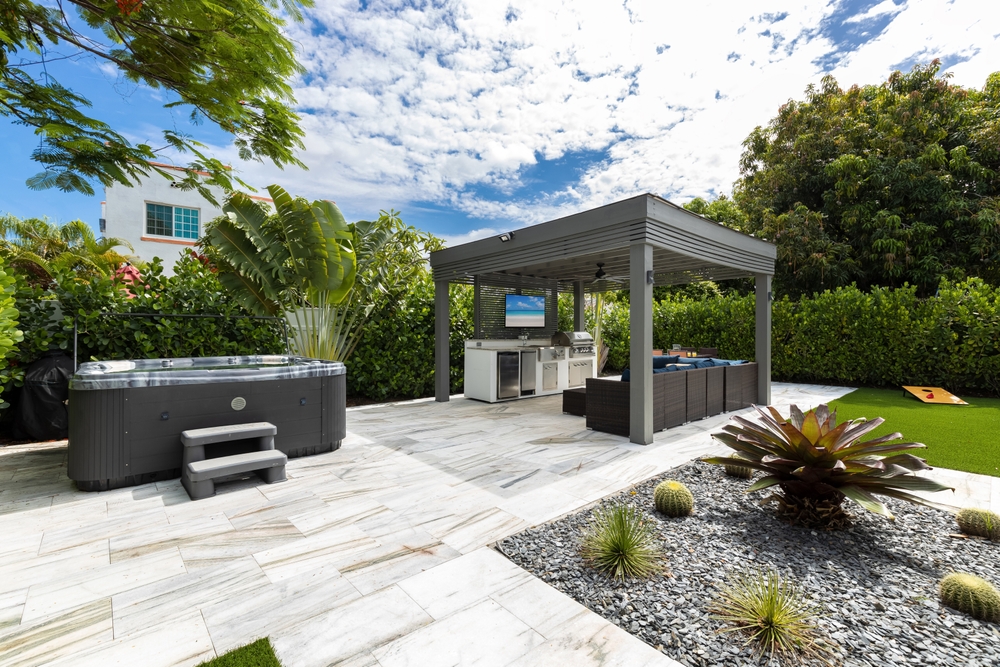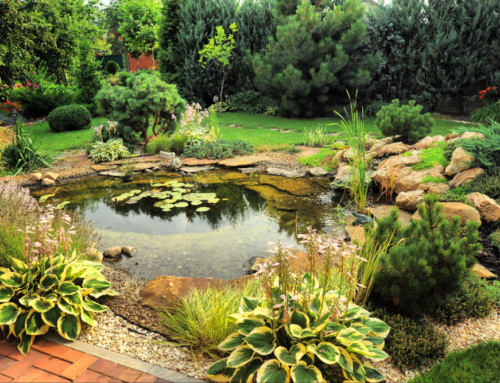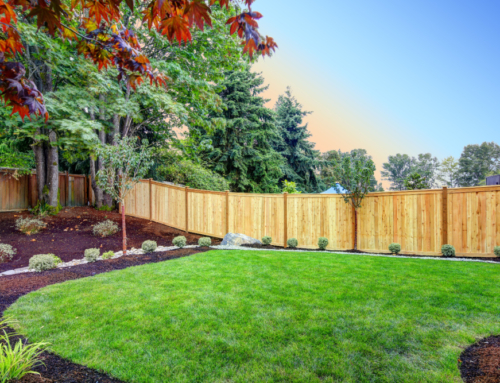The outdoor kitchen has emerged as a centerpiece of leisure, entertainment, and style in residential landscaping. Gone are the days when backyards were merely spaces for lawns and gardens; today, they are extensions of the home’s living area, with outdoor kitchens leading this transformative trend. This evolution in landscape design enhances the aesthetic appeal of outdoor spaces and adds significant value to a property in terms of usability and financial worth. Through this blog post, we’ll explore the multifaceted benefits of outdoor kitchens and how they can redefine the experience of your outdoor living space.
Outdoor kitchens offer a unique blend of functionality and beauty, transforming how families and friends gather and enjoy the outdoors. They serve not just as spaces for cooking and dining but as vibrant hubs for socializing, relaxing, and reveling in the beauty of nature. Whether hosting a summer barbecue, enjoying a quiet evening with family, or throwing a garden party, an outdoor kitchen brings a new dimension to these activities, making them more enjoyable and memorable.
Planning and Designing Your Outdoor Kitchen
The first step in integrating an outdoor kitchen into your landscape is thoughtful planning and design. It’s crucial to consider how the kitchen will blend with your existing landscape and the architectural style of your home. The location should be chosen carefully, considering factors like wind direction, sun exposure, and proximity to the house. Ideally, it should be easily accessible from the main house, especially if you plan to transport food and supplies frequently.
When designing your outdoor kitchen, consider the space’s functionality. What appliances will you need? How much storage space is required? Do you prefer a gas grill, a charcoal grill, or a wood-fired oven? The ergonomic layout should allow efficient movement between cooking, preparation, and serving areas. Incorporating elements like an island or a bar can enhance the kitchen’s usability and create additional socializing space.
Material Selection and Durability
Selecting suitable materials is vital in ensuring longevity and aesthetic appeal for your outdoor kitchen. Materials should be weather-resistant and withstand the elements without losing their luster. Stainless steel is a popular choice for appliances due to its durability and resistance to rust and corrosion. For countertops, materials like granite, concrete, or weather-resistant tiles are excellent choices, offering a combination of durability and style.
The choice of materials should also complement the overall design of your landscape and home. If your house features a lot of woodwork, consider incorporating wooden elements into your outdoor kitchen for a cohesive look. Similarly, if your landscape has a lot of stone elements, using stone in your kitchen design can create a natural, integrated appearance. The key is to balance durability, functionality, and aesthetics.
The Culinary Experience and Entertainment
An outdoor kitchen elevates the culinary experience by taking it out of the confines of the home and into the open air. Cooking becomes more than just a routine; it transforms into an engaging activity where the chef can interact with guests and enjoy the beauty of the outdoors. The possibilities are endless and exciting, from grilling burgers to baking pizzas in a wood-fired oven.
Beyond cooking, outdoor kitchens are perfect for entertainment. Equipped with features like built-in speakers, refrigerators, and even outdoor televisions, they become the ultimate spot for hosting gatherings, celebrations, or simply enjoying a relaxing evening. The atmosphere of an outdoor kitchen, combined with good food, music, and company, creates unforgettable experiences for hosts and guests.
Integrating with Landscape Features
An outdoor kitchen should seamlessly integrate with other landscape features. This could mean aligning it with a nearby pool, patio, or garden design. Lighting plays a crucial role in this integration; it should illuminate key areas for cooking and dining while creating an inviting ambiance. Strategically placed lights can highlight landscape features, enhancing the overall beauty of the outdoor space.
Consider also the natural elements of your landscape. If you have a garden, design your outdoor kitchen to overlook it, providing a beautiful backdrop for your culinary creations. If there’s a spectacular view, position the kitchen to take advantage of it. The goal is to create a harmonious balance between the kitchen and the natural surroundings, making it feel like a natural extension of your home.
Sustainability and Eco-Friendly Options
Incorporating sustainability into your outdoor kitchen design is good for the environment and can enhance the overall cooking and dining experience. Utilizing solar-powered lights and energy-efficient appliances reduces your carbon footprint and can lead to savings on utility bills. Harvesting rainwater in an outdoor sink or irrigation is another eco-friendly practice to consider.
Sustainability also extends to the choice of cooking equipment. For instance, a solar oven or a grill that uses sustainable fuels can be great additions. Even the materials chosen for construction can contribute to the kitchen’s sustainability, with options like reclaimed wood or recycled materials being both environmentally friendly and aesthetically pleasing.
Conclusion: Transforming Your Outdoor Space
An outdoor kitchen is more than just a feature; it transforms your outdoor living experience. It extends the warmth and functionality of your home into the natural world, creating a space that’s not just about cooking but about creating memories, enjoying the outdoors, and entertaining in style. Whether it’s a simple setup with a grill and a countertop or a fully equipped culinary haven, an outdoor kitchen is an investment that pays dividends in terms of lifestyle enhancement and property value.
Are you looking for the best residential lawn maintenance services in NYC? If so, connect with us today!






